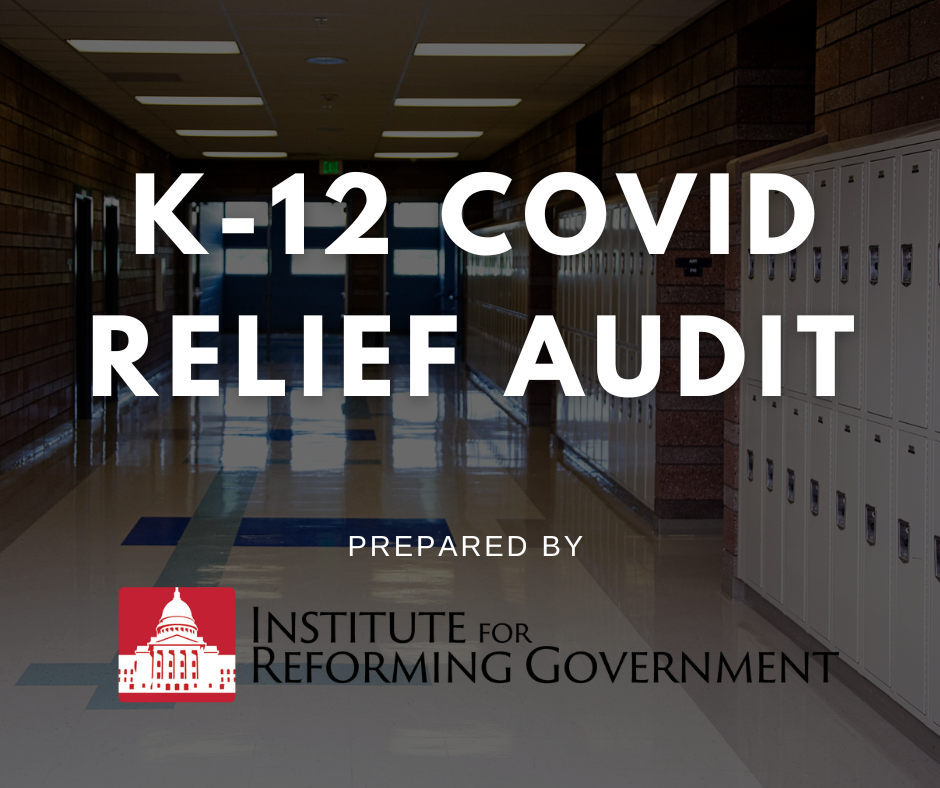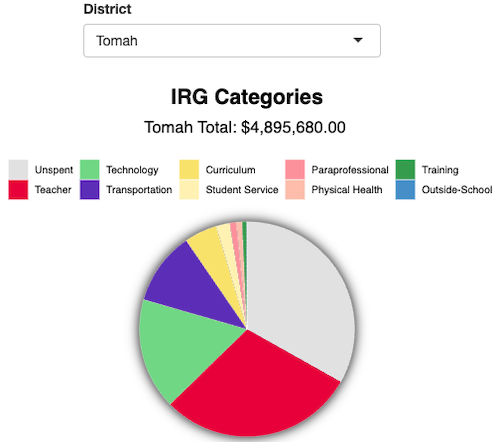IRG Releases Transparency Tool for $1.49B in Federal K-12 COVID Relief
Calls on legislature to conduct oversight of spending plans
Delafield, WI. – Today, the Institute for Reforming Government (IRG) released an interactive database for taxpayers to see how Wisconsin school districts are allocating the unprecedented $1.49 billion of federal relief funding they received during the COVID-19 pandemic. Click here for the database tool.
The Elementary and Secondary School Emergency Relief (ESSER) Fund III, passed by Congress as part of the American Rescue Plan Act, was the third installment of money given to Wisconsin school districts during the pandemic. They also received $174 million from ESSER Fund I and another $686 million from ESSER Fund II.
This new database is a powerful tool for informing parents, taxpayers, and lawmakers; highlighting successes and failures in school allocations; and holding the Department of Public Instruction accountable for children’s futures.
STATEMENT:
“As the public learns for the first time about districts’ plans and pace for spending, one thing is clear: DPI has not provided adequate transparency for 1.49 billion federal dollars.
“What DPI won’t do, IRG will. Throughout 2023 and 2024, until every last COVID relief dollar is allocated, my team will be tracking where the money will go. The legislature should consider oversight hearings to help these efforts.” – IRG President CJ Szafir
HOW IT WORKS:
IRG assessed 450 district budgets with 7,534 line items approved by the Wisconsin Department of Public Instruction (DPI). DPI presents these in individual, unsortable, ever-changing pdf files instead of a state-run dashboard and groups funding into vague, unhelpful categories like “Addressing Long-Term School Closure.” IRG went district by district, line by line to compile the data for general consumption and presented it in common-sense categories like “Teachers” and “Transportation.”
The public can now browse the website’s charts for any Wisconsin district, examine our state as a whole, or dive into the full allocation table themselves. IRG Senior Research Director Quinton Klabon can field inquiries. IRG will update the dashboard through the ESSER III deadline, September 2024, as districts continue to allocate.
TAKEAWAYS:
- Only 34.0% of $1.49 billion has been approved by DPI for spending. Districts must allocate funding by September 30, 2024, and draft budgets for the final ESSER year by June 2023, so this falls short of a pace that would help exhaust funding on student recovery by the federal deadline. This also means that $985 million lies inactive, yet to be approved by DPI, as Governor Evers begins a budget debate to add $2 billion in unfocused education spending.
2. Milwaukee has 0.0% approved by DPI despite accounting for $505 million of Wisconsin’s total funding. Madison has 1.2% approved, Waukesha 1.8%, Beloit 2.3%, Eau Claire 11.6%, and Green Bay 24.2%.
3. In actuality, districts are spending, which means that some districts may be using funds without required DPI oversight.
4. Improper oversight has also led to 12 districts exceeding their budgets by $1 million total as well as $8 million in unlabeled mystery allocations.
5. 16.1% of all allocations were construction instead of direct student support, ignoring “strong discouragement” from the Biden administration.
6. Despite Governor Evers’ calls for $270 million in school mental health resources, districts have outlined only $29 million on mental health with essentially unlimited funding, 1/3 the construction allocation total. Smarter spending may be the answer.
7. Many districts have allocated little toward curriculum. Yet, 52% of districts have yet to replace discredited reading curricula that led our White students to rank just 22nd nationally, Hispanic students 25th, and Black students second from last despite ranking 17th nationally in cost-of-living-adjusted education spending. Better curriculum could drive achievement. IRG provided a suite of solutions in 2022.
8. 51.5% of obligations have been on permanent personnel, creating a fiscal cliff when money runs out.
9. Lower-income districts did not necessarily get more money per student than higher-income districts because of how Congress allocated funding. Some higher-income districts received up to $7,023 per child while some lower-income districts received as little as $673 per child.
10. Private voucher schools got just $889 extra per pupil through a separate relief fund called EANS II. Public schools got $1,853 extra per pupil. The biggest gap was in Milwaukee, where high-performing schools like Saint Marcus Lutheran received -$6,596 less than schools 3 blocks away.


